10 examples of function and creativity combining to great effect
Mechanical processes, public transport signage, coffins - creative design is everywhere!
"I'm a designer." Do hugely successful ad campaigns, slick furniture or stylish interiors come to mind? How about aeroplane nose art, coffins, or rubbish bins? Design is everywhere, and not all designers reflect life in Mad Men. Here's our pick of the best design in situations that are ordinarily functional.
01. Guerilla signs on the Tube
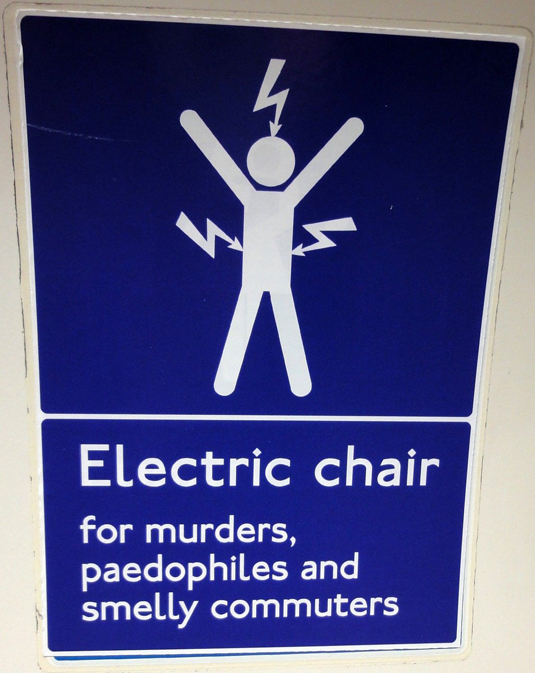
The purely functional purpose of transport signs makes them irresistible to interfere with. We're so attuned to the predictability of public transport signs, that guerrilla art can go virtually unnoticed. Guerilla tube art replaces practical signage with more daring, tongue-in-cheek instructions.
Over the years, subtle reproductions of transport signs have included £200 penalties for eye contact, a Shepherd's Pie tube stop and a submarine to Somalia underneath Tottenham Court Road. A sliding door sign has been changed to 'Naughty passengers will be crushed' and priority seat signs have been designated to overweight and inebriated passengers.
Tapping into the London spirit – or lack of it – other witty messages include: 'We apologise that all apologies for the chronic overcrowding on this train are shallow and meaningless' and 'iPods must be worn at all times. If you don't have an iPod then play with your phone, read a newspaper or pretend to be asleep'.
02. Military wear
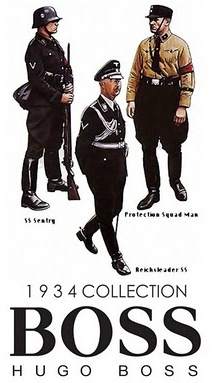
Many hugely successful fashion brands started out by creating garments solely for functional purposes. Take Barbour and Hugo Boss, for example. Barbour's hardy coat designs were initially targeted at fishermen and went on to serve in both the Second World War and Falklands conflict.
Over in Germany, Hugo Boss' second attempt at founding his own clothing company really took off following his involvement with the National Socialist party. In the 1930s, the clothing brand became the official supplier of uniforms for the SA, SS and Hitler Youth. A successful uniform design company has become a billion-pound German luxury fashion and style house.
Dog tags are another element of military wear that have become fashionable. Ordinarily, these tags serve to identify dead and wounded military personnel. Inevitably, our preoccupation with anything that relates to a sense of identity led to the tags' commercial success. Dog tags can feature names of loved ones or quotes that carry sentimental value; high end-end jewellers have even designed jewel-encrusted versions.
Daily design news, reviews, how-tos and more, as picked by the editors.
03. Design in Soviet Russia
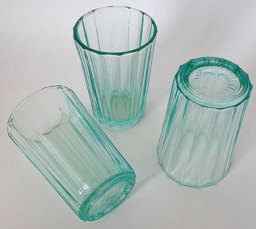
Soviet design is often considered to be the ultimate expression of function over form. Despite this association, the era did in fact produce influential and unexpected designs. The Boiling Wand highlights this: it had the practical use of heating water but was considered quirky and unusual to the rest of the world.
Vera Mukhina's drinking glass – or granchak – is possibly the best example of an object from this era that combines practicality and creativity. The famous Soviet sculptor created the 14-faceted drinking glass in 1943. The granchak's success owes to its indestructibility and versatility – it's used to drink both vodka and tea. Nowadays, granchaks are somewhat symbolic of the Soviet era and are even perceived as souvenirs.
04. Easter eggs in software

Software design may be dismissed as a boring profession by some, but Easter eggs in software uncover developers' playful sides. Many personal computers have elaborate eggs hidden in ROM, including lists of the developers' names or images of the entire development team. Macs can tell jokes then instruct you to get back to work if you ask for too many.
Windows contains hidden cookie recipes, political statements and a secret file full of quotes from Microsoft developers. Firefox has developed a strange prophetic page proclaiming its future domination and also gives a quick lesson on robots. Software is full of Easter eggs – just type the term into your search engine to discover some for yourself.
05. Infinity in animation
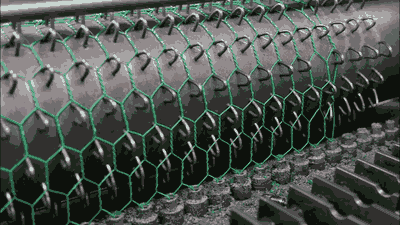
Mechanical processes are often used as symbols for the daily grind: to the indifference of everyone around, the same patterns are produced day in, day out. Perhaps this is why they make such effective gifs. The gif creators have added a strangely captivating, creative element to processes that are often dismissed as interminable and extremely dull.
Gifs of these processes heightens the idea that the factory never stops – that the conveyor belt of production will continue forever. It generates a sense of immortality – the cogs are perpetually turning. Warhol's 1964 film Empire was strangely mesmerising for the same reason. The artist evokes a sense of continuity through eight hours of slow motion footage of The Empire State Building.
06. Plane art

In World War II, nose art on aeroplanes began as a means to help identify friendly units. In an environment that dictated conformity and stifled creativity, it's no wonder that the practice rapidly became a means of expressing individuality. A fresh lick of paint took the form of pinup models, cartoon characters and lucky symbols such as dice and playing cards.
Although it never became a vocation, nose artists were paid reasonably well in World War II and were high in demand in the US Air Force. Perhaps unsurprisingly, the art tended to be racier when it was further away from the headquarters or the public eye. It was more common to see nudity on aircraft in the Pacific than in Europe.
07. Coffin design

Who said that the job of a coffin designer had to be dull? A quick search reveals that 'crazy coffins' and 'creative coffins' are highly sought after. Business is booming for one successful coffin manufacturing director, who alludes to an ever-increasing demand for coffins that genuinely reflect the deceased's personality.
Although one size may well fit all, these designers have stepped outside the confines of convention and produced caskets that carry personal value for mourners. The taste may be dubious, but where there's demand, there's supply. Nowadays, there's an abundance of iPhone- inspired, fast food and crime scene coffins available. One latte-loving mum was recently buried in a Costa coffin.
08. Coffee art
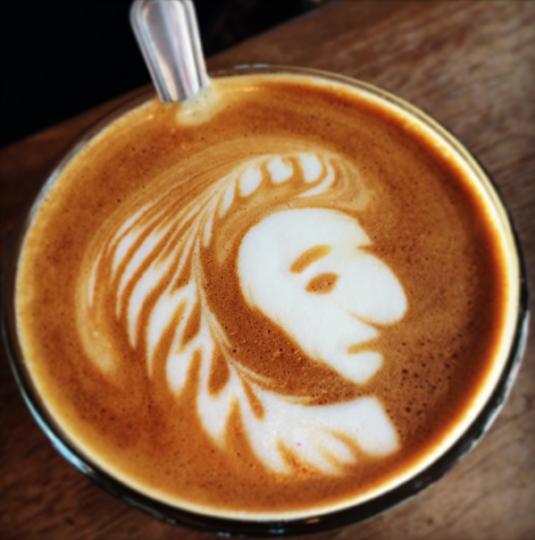
Many of us fail to function without a hot beverage first thing in the morning. A coffee often provides a much-needed caffeine boost, rather than a pleasurable break in the day. Overriding these practical reasons for wanting a drink, baristas world-wide have transformed the simple act of making into a coffee into creating a piece of art. Popularised by David Schomer, latte art has been in demand since the 1980s. Here in Shoreditch, you can always rely on being handed an impressive creation when ordering a latte.
09. Bin design

The job of a bin designer may not sound particularly alluring, but it's more creative than you may imagine. Take the bins in Singapore's Changi airport. You wouldn't stroll past a life-size plastic bottle or these hard-hitting environmental statistics without thinking twice. Bin designers are tasked with thinking up the most effective and visually engaging ways to make people recycle their waste. In Brazil, the bin design industry is like the Pantone palette of the waste world, while the state of Ohio has decided that smiley faces will get people's attention.
10. Speech mashups
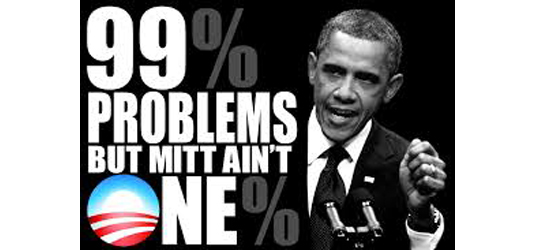
The prospect of listening to a speech rarely elicits excitement. Speeches generally serve a practical purpose of delivering important information – which often makes them uninspiring. In recent years, it's become increasingly popular to remix political speeches.
In 2012, Diran Lyons' 99 Problems (Explicit Political Remix) featured Barack Obama rapping a modified version of Jay Z's 99 Problems. The remix notched up almost 100,000 YouTube views – bigger than some political adverts.
Over in England, Clegg's apology over the rise of tuition fees was capitalised on by music producer Alex Ross. His remix of the speech – 'Nick Clegg Says Sorry (The Autotune Remix)' became an overnight sensation.
Words: Hannah Franklin
Hannah Franklin is PR and marketing executive for Firedog Creative. Read her other posts for Creative Bloq here and here.

The Creative Bloq team is made up of a group of art and design enthusiasts, and has changed and evolved since Creative Bloq began back in 2012. The current website team consists of eight full-time members of staff: Editor Georgia Coggan, Deputy Editor Rosie Hilder, Ecommerce Editor Beren Neale, Senior News Editor Daniel Piper, Editor, Digital Art and 3D Ian Dean, Tech Reviews Editor Erlingur Einarsson, Ecommerce Writer Beth Nicholls and Staff Writer Natalie Fear, as well as a roster of freelancers from around the world. The ImagineFX magazine team also pitch in, ensuring that content from leading digital art publication ImagineFX is represented on Creative Bloq.
